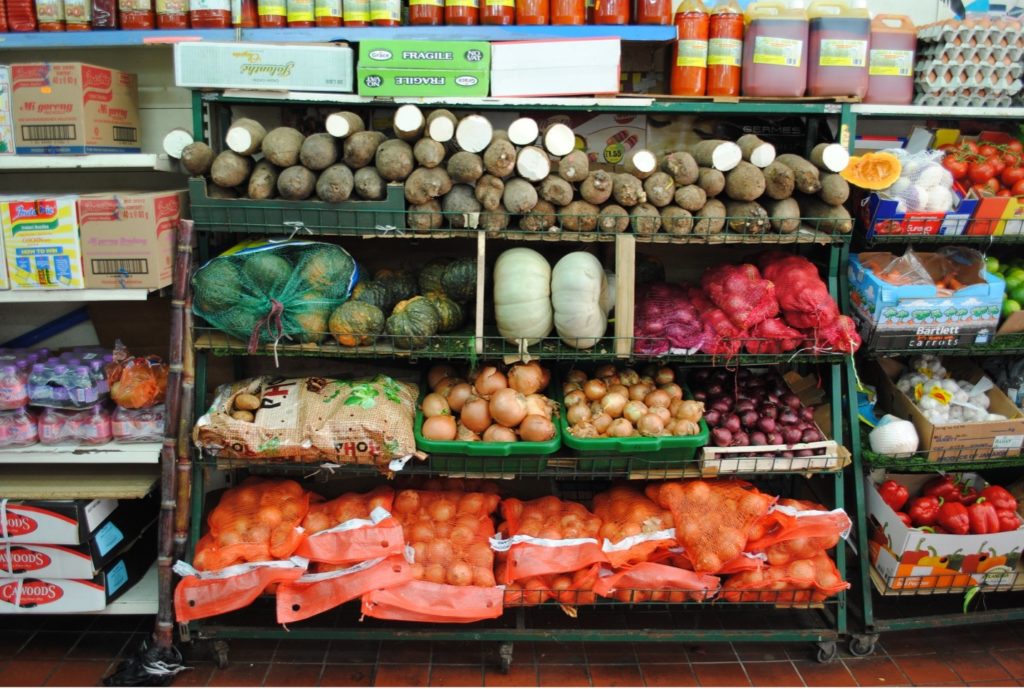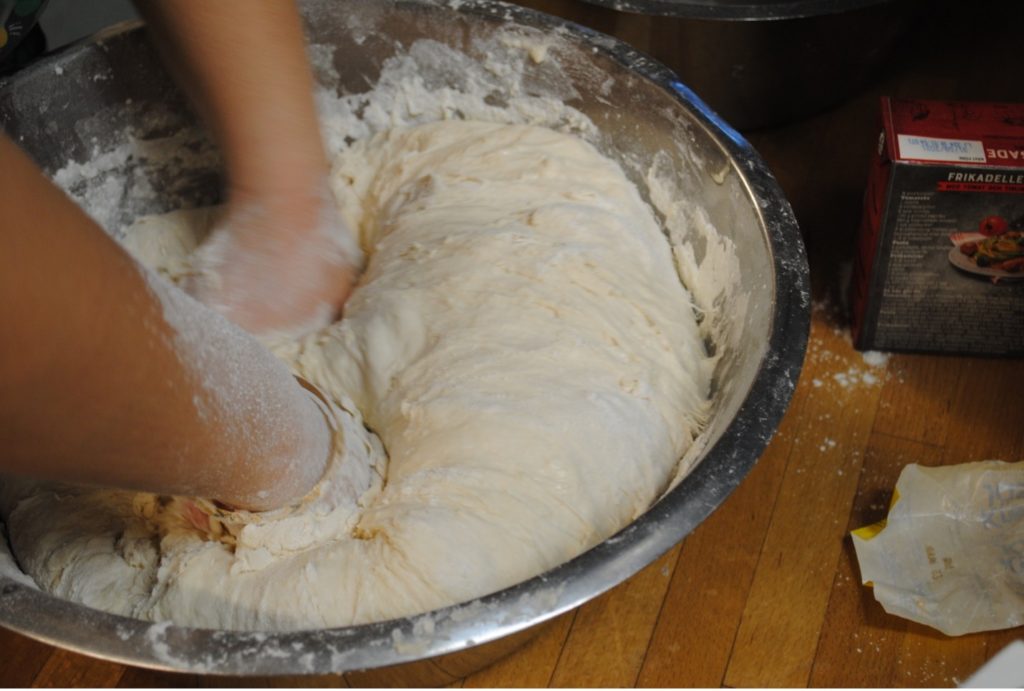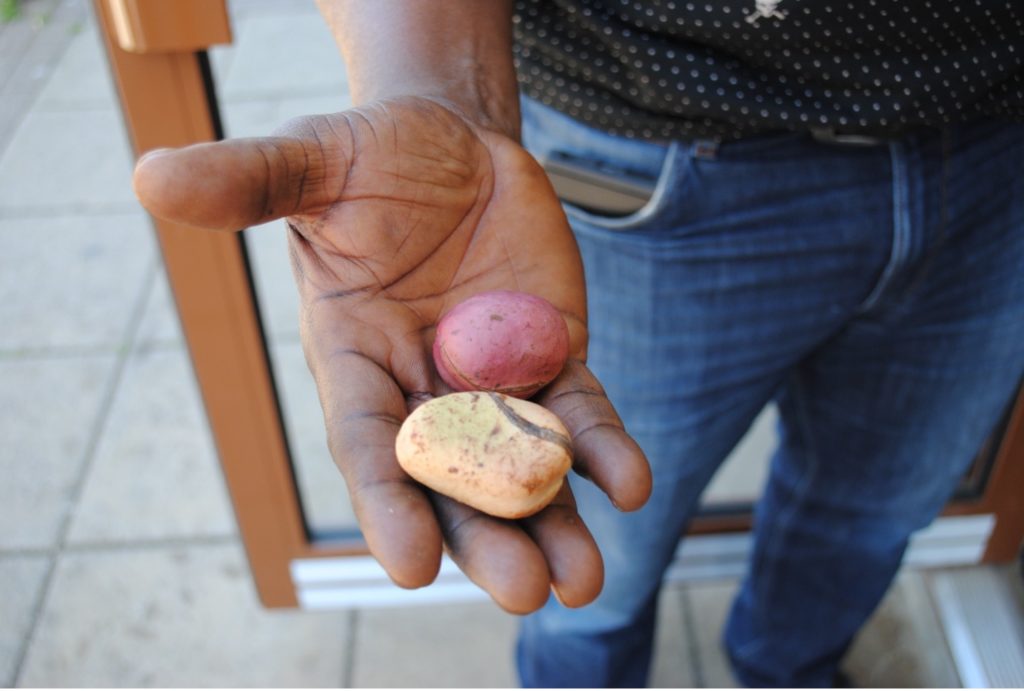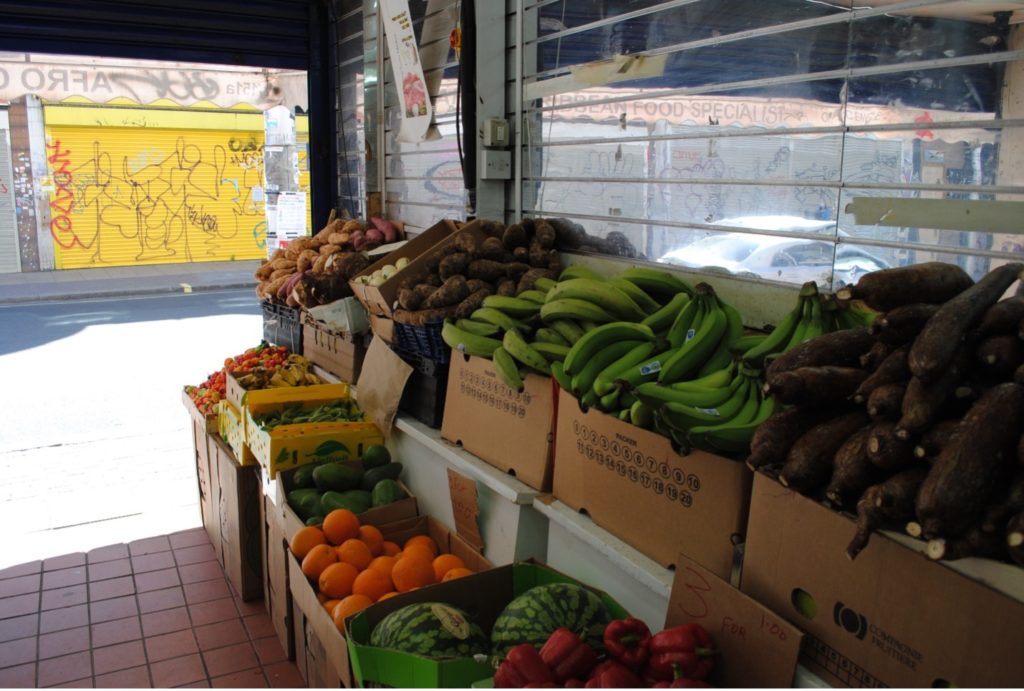When people move from one place to another, they bring their knowledge and experience from home. Migration can enrich the food system with dietary and cultural diversity, fostering acceptance and curiosity for other ways of being and eating. A positive attitude to migration can re-address power imbalances and help countries in Europe to embrace values of care and hospitality as well as place-based traditional growing and cooking, and revive our food systems.
Rooting en route: How migration can help fix a broken food system

Last year in my city of Uppsala, Sweden, I noticed the rise in pink-clad, brown-skinned food delivery cyclists zipping around the city. Fast food consumption has boomed in many places during the pandemic. In the UK for example, Domino’s will open over 200 new restaurants this year. Often, the business of providing speedy meals employs migrants from the Global South, sometimes in illegal or precarious situations. The irony is, that usually in their home countries the food culture – eating, cooking, growing – doesn’t make haste.
Covid-19 exposed the many failures of the food system, highlighting the connections between food, migration, culture, and sustainability. Coincidentally, this is the area of research I began working in a couple of years ago, before the pandemic unraveled. I was a master’s student at the Stockholm Resilience Centre, a migrant (by choice rather than force) carrying my own mixture of cultures, and I was interested in understanding how powerful forces such as globalization play out in people’s daily lives. I have been listening to the stories of migrants, refugees, and immigrants from a range of backgrounds now living in Sweden, and also in the UK. We have cooked food, shared meals, and held hearty conversations. What the people I met all had in common was that they came from countries where agriculture is a major part of livelihoods – 62% in Afghanistan, 43% in India, 86% in Somalia, and 67% in Rwanda (World Bank Data, 2017). Meanwhile, in Sweden, agricultural employment has fallen to 3%.
This shift is mirrored in global trends of food culture: people changing from eating and preparing traditional meals that are more ecologically sustainable and better for our health, to speedy unified Westernized diets which emphasize industrially produced processed foods, driving homogenization, pushing out age-long traditions and making our plates look the same wherever you go. In my work, I seek to understand the lived experiences of this rural-urban, South-North transition.
Many people I spoke with had fled from conflicts that were caused by those feeding the flames of ethnic difference, for example the ongoing conflict in Afghanistan. Celebrating diversity is not only a way to build peace, it also how our societies can thrive. If people that migrate are given voice and agency in the places where they arrive, they can enrich and diversify local food culture. By increasing resilience, diversity can stop our food systems from collapsing in the face of layered climate, health, and economic crises.
Embracing migration as a positive force in order to nurture the sustainability of our food systems isn’t the most obvious course of action, but its importance becomes clearer, once you come to know the experiences related to people’s connection to land, fast and slow food, intergenerational learning, and cultural dynamism.
Highly industrialized food systems break our connection to land
When people move to a big European city – or to any city in fact – the disconnect between urban and rural accumulates through generations, and with this, age-old connections between land and its stewards disintegrate.
Many of the people I spoke with have agricultural knowledge and experience, although they now often work in other sectors. They are well aware that if this knowledge is not practiced, it will not be passed down to future generations. Yet there are significant hurdles to practicing agriculture in a non-agrarian country. For Venuste Rwabukambiza, an agronomist studying in Sweden, growing food has been part of his life from a young age. When he was small, his mother gave him and his siblings each a partition of the small holding they had in rural Rwanda. They could try and grow whatever they wanted and sell it at the market. This way they learnt problem solving and self-sufficiency. He also learnt how to farm without using inputs like fertilizers and pesticides.
Lima Habib, who is of Afghan heritage, and her German-Slovak boyfriend reflect upon their overlapping family experiences. They hope to one day leave Stockholm for somewhere more rural where they can grow their own food. Marie finds that the food in the Swedish supermarkets lacks smell, taste, and a connection to place. On the contrary, the food that Lima’s mother brings back in her suitcase is firmly rooted: a dried green chili spice mix made by her aunt in Kabul, where she grew the chilis from scratch, holds prime position in her cupboard.
When we process foods ourselves, or know who processed them, we connect to the place where our food comes from and to the people who grew or made it. This tactile engagement with what we eat returns the power held by supermarkets to the individual, to give people more autonomy in their nutrition.
Fast food damages intergenerational learning
When I visited the vegetable aisle of “Matvärlden” (“Food World”) in Stockholm, a huddle of women stood over two large piles of beans. They chattered in a language that was difficult for me to place, carefully selecting the superior beans from the pile, filling plastic bags. In my interviews, a student from India described his feeling that the practice of selecting produce like this has been robbed from him by supermarkets presenting vegetables in prepacked wrappings.
In addition to food growing skills, old recipes and food preparation techniques are being lost. A woman from Afghanistan described to me how when she cooks she measures by sight, feel and taste, passed from generation to generation. This intergenerational learning was integral to survival as she was growing up. But surviving in the city has its own challenges and priorities. There is not always the time to prepare food from home, nor to teach her daughter.
For better or for worse, culture is never static
It can be easy to romanticize livelihoods that are strongly tethered to the land and rooted in tradition, and the Western gaze has a disturbing tendency towards painting idyllic remote scenes of village life. Since time immemorial, cultures have interwoven, as people, ideas and goods circulated. As a result, all humans encounter and embody a multitude of cultures, but this is especially pronounced for those who migrate.
This dynamism can be both destructive and creative. In Afghanistan, people have stewarded a vast array of traditional seed varieties for centuries. When Afghanistan was under the influence of the Soviet Union, crop diversity was restricted and top-down development initiatives sidelined many of the ancient grains, so now hundreds of seed varieties have fallen out of cultivation. Along with this, the specific ways to grow, eat and prepare foods that come from these seeds are disappearing too. This cultural erosion is reinforced when imported food is introduced to local diets. As rural livelihoods change, people move to big cities like Kabul, the fifth fastest growing city in the world. From there, the ongoing conflict and poor employment opportunities push people to emigrate abroad.
Back in Uppsala, an Afghan cook showed me how to bake Afghan flatbread. He had spent a large part of his life in Pakistan. We used wheat flour, grown in Romania, rather than a traditional grain. Whilst I clumsily shaped the bread with my hands, in contrast to his swift effortless movements, we listened to Bollywood music from India. In this simple task we were connected to many places – this is what cultural geographer Doreen Massey has described as a “global sense of place”.

Many migrants experience internal conflict as they strive to assert their cultural identity and belonging in a new place, whilst also embracing inevitable changes. As cultures continue to change and intermix in dynamic ways, some practices are held onto. For example, West African communities in London use the kola nut, ceremonially, medicinally and recreationally. The nuts come in many varieties. In weddings they symbolize fertility and “for better or for worse” due to the bitter taste and sweet aftertaste that some varieties have.

How can Europe embrace migration and cultural diversity for better food systems?
The stories I had the honor of hearing are diverse, and not representative of the experience of any nation or people. Globalization is blamed for bringing cultural homogenization and the spread of diets that are high in sugar, focused on just a few varieties, and fueled by branding and advertisement; McDonaldization, supermarketization, and industrialization have characterized much of the 20th and 21st centuries. But cities in the Global North, where many political decisions about climate and sustainability are made, are not as homogenous as narratives of globalization would have us believe: there are also processes of hybridization, creolization, and cultural preservation.
Cities like Stockholm and London nurse a wealth of diverse cultural practices and world views bubbling away in minds and in kitchens. It can be a case of allowing ourselves to see them – asking new questions and listening for answers in new places. For example, in a country like Sweden, where every fourth resident has a foreign background, what should be considered as local Nordic food when promoting a sustainable “New-Nordic” diet?
There are some examples of social enterprises that are embracing these understandings. For example, Migrateful hires migrants to teach cooking classes in London. Skuhna is a restaurant in Ljubljana, run and staffed by chefs from the Global South, that hosts different cultural events and discussions about development practice, as well as serving delicious food. In urban farms and gardens across Europe and the US many migrants grow food, often using ecological, innovative, and resourceful agricultural skills they have inherited from their homeland. This can challenge notions of who the experts are when it comes to food – they are not only high-end chefs and university researchers. Unfortunately, however, migrants can experience discriminatory or bureaucratic challenges, for example in acquiring an allotment to grow food for their community.
The highly industrialized food system, with fast food and processed products, is broken. Through a lens of migration, it became clearer to me why this is failing the needs of so many, and failing the needs of the future. Furthermore, food plays an important role in establishing one’s cultural identity and sense of belonging – this is part of how we root ourselves in the world. Everybody eats, and food brings us to a level playing field that can promote integration and tolerance through a celebration of diversity.
There is a need to pass down cooking and growing techniques between people, which is impeded by fast food. There is a need to preserve diverse forms of knowledge. Parent-to-child learning allows for adaptations to be made at each generation, so cooking can still be responsive to changes in food availability and between places – many of the young women I met were learning their families’ recipes with plant-based adaptations. There is a need to treasure traditional skills in the art of nourishment -whether feeding, caring, growing, stewarding – from different parts of the world, whilst also appreciating that these practices will continue to morph, mix, and intertwine en route.
Reporting by Naomi Terry, MSc Social Ecological Resilience for Sustainable Development at the Stockholm Resilience Centre. This article was written in collaboration with SIANI.
